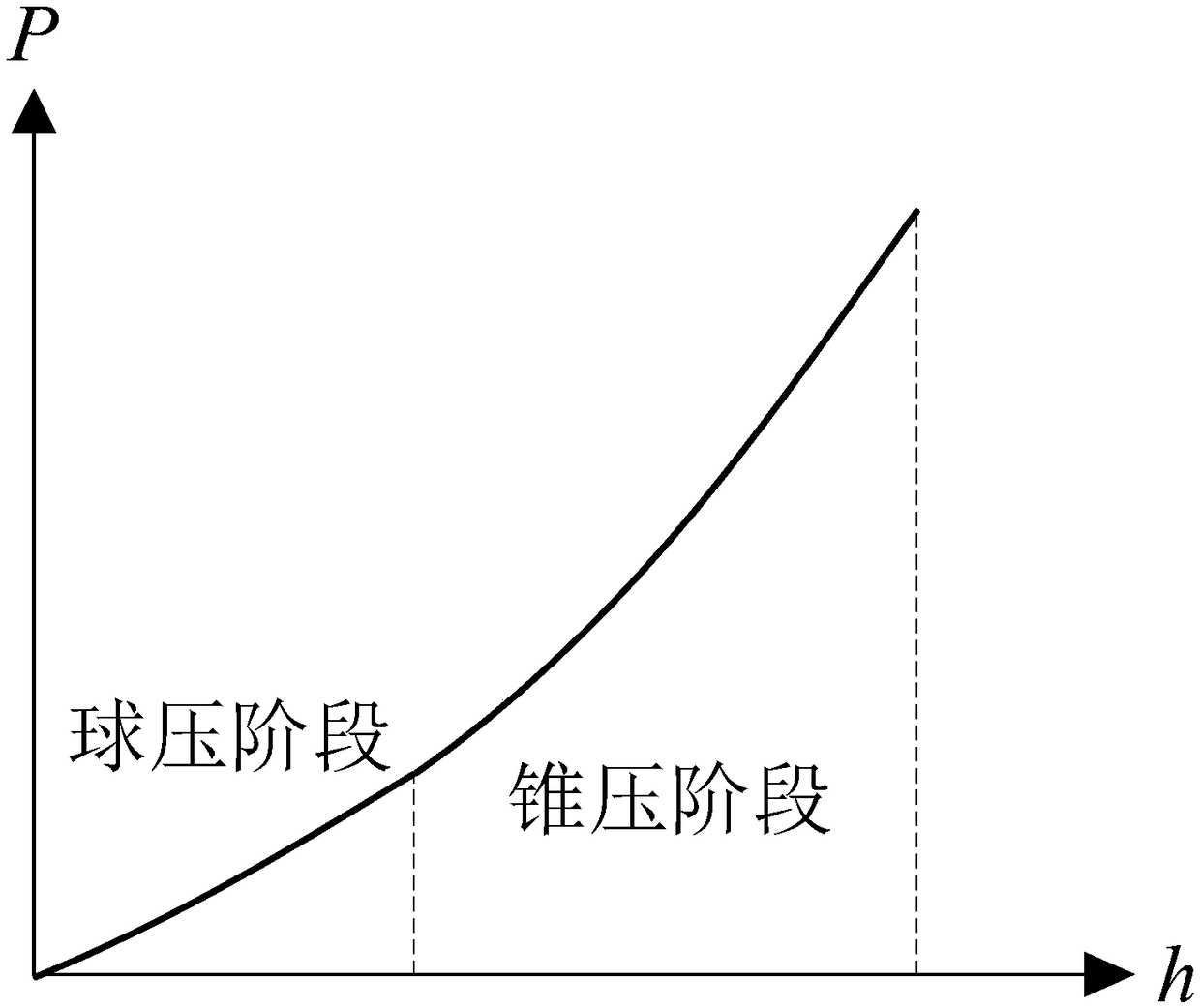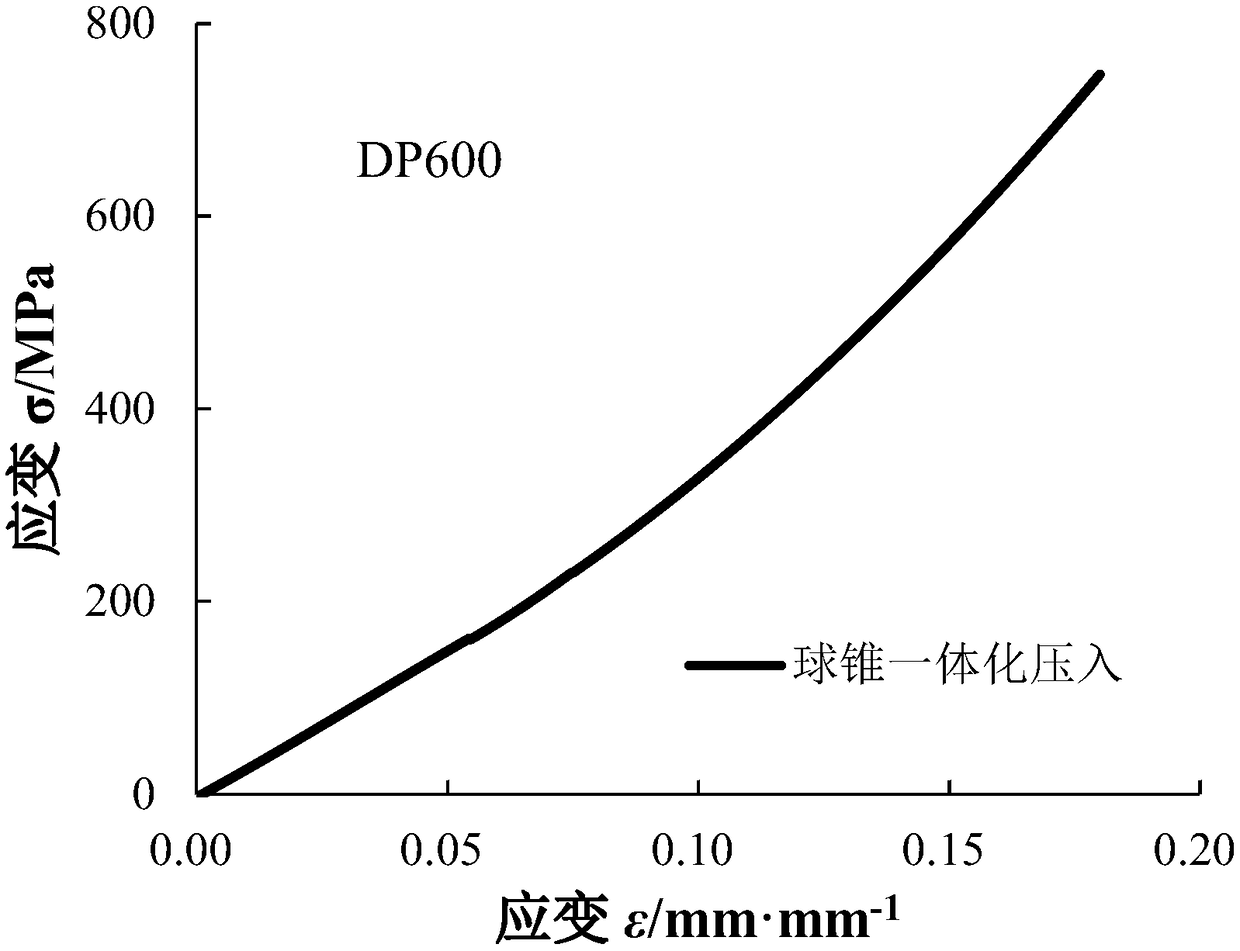Method for predicting material equivalent stress-strain relation based on sphere and cone integrated pressure head
A strain relationship and prediction method technology, applied in the direction of analyzing materials, measuring devices, special data processing applications, etc., can solve the problem that the position of the pressure point is not unique, achieve the effect of simple method, good test effect, and simplified test process
- Summary
- Abstract
- Description
- Claims
- Application Information
AI Technical Summary
Problems solved by technology
Method used
Image
Examples
specific Embodiment
[0084] For commonly used macroscopic indentation, in order to obtain sufficient material deformation information, the indentation depth range is generally 100μm-300μm; at this time, it is necessary to grind and polish the surface of the metal or non-metallic material or structure to make the surface rough After the thickness is lower than 0.32μm, the quasi-static indentation test can be carried out. The loading method is as follows: figure 1 As shown; if it is necessary to test nano-scale or larger-scale materials, as long as the material is relatively uniform and the depth or load test can be realized, the indentation depth is not strictly limited; but the nano-indentation surface also needs to meet a certain degree of relative smoothness .
[0085] figure 2 The indentation test load P-depth h relationship of a typical ball and cone is given, Meyer's law is compounded in the ball pressure stage, and Kick's law is satisfied in the cone pressure stage; theoretical derivation ...
PUM
 Login to View More
Login to View More Abstract
Description
Claims
Application Information
 Login to View More
Login to View More - R&D
- Intellectual Property
- Life Sciences
- Materials
- Tech Scout
- Unparalleled Data Quality
- Higher Quality Content
- 60% Fewer Hallucinations
Browse by: Latest US Patents, China's latest patents, Technical Efficacy Thesaurus, Application Domain, Technology Topic, Popular Technical Reports.
© 2025 PatSnap. All rights reserved.Legal|Privacy policy|Modern Slavery Act Transparency Statement|Sitemap|About US| Contact US: help@patsnap.com



